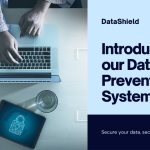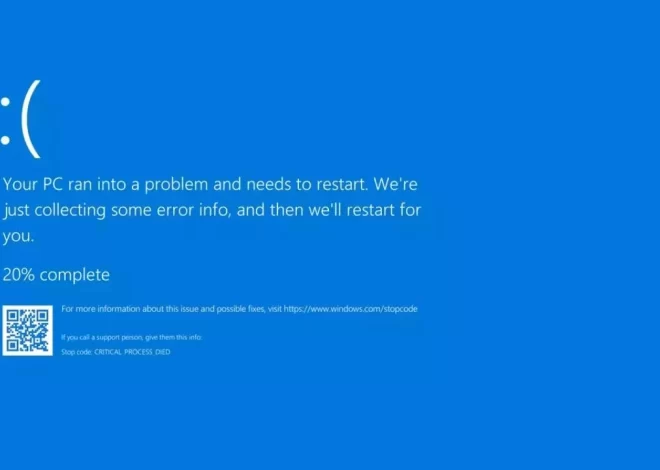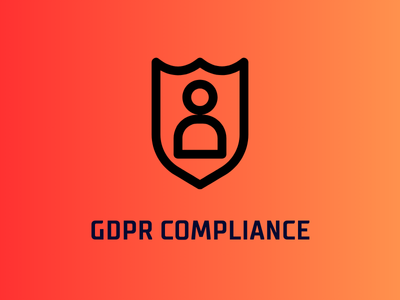
Digital Personal Data Protection Act: Safeguarding Privacy in the Digital Age
Contents
- 1 Safeguarding Privacy in the Digital Age: A Deep Dive into the Digital Personal Data Protection Act of 2023
- 1.1 Understanding the Digital Personal Data Protection Act of 2023
- 1.2 Implications and Benefits of the Digital Personal Data Protection Act
- 1.3 Challenges and Considerations
- 1.4 Implementing the Digital Personal Data Protection Act (DPDPA)
- 1.4.1 1. Understanding the Requirements:
- 1.4.2 2. Conducting a Data Audit:
- 1.4.3 3. Establishing Policies and Procedures:
- 1.4.4 4. Implementing Technical Measures:
- 1.4.5 5. Providing Training and Awareness:
- 1.4.6 6. Establishing Accountability and Governance:
- 1.4.7 7. Ensuring Cross-Border Compliance:
- 1.4.8 8. Establishing Response Mechanisms:
- 1.4.9 9. Continuous Monitoring and Improvement:
- 1.4.10 10. Engaging with Regulatory Authorities:
- 1.5 How the Digital Personal Data Protection Act used in Workspace
- 1.5.1 1. Employee Training and Awareness:
- 1.5.2 2. Data Collection and Processing:
- 1.5.3 3. Data Security Measures:
- 1.5.4 4. Privacy by Design:
- 1.5.5 5. Data Subject Rights:
- 1.5.6 6. Incident Response and Reporting:
- 1.5.7 7. Vendor Management:
- 1.5.8 8. Compliance Monitoring and Audit:
- 1.5.9 9. Continuous Improvement:
- 1.5.10 10. Legal Compliance and Reporting:
- 1.6 Conclusion
Safeguarding Privacy in the Digital Age: A Deep Dive into the Digital Personal Data Protection Act of 2023
In an increasingly digitized world, where personal information is constantly being collected, stored, and shared, the need for robust privacy protections has become paramount. Recognizing this, governments around the globe have been enacting legislation to safeguard individuals’ digital rights and personal data. One such landmark legislation is the Digital Personal Data Protection Act of 2023.
Understanding the Digital Personal Data Protection Act of 2023
The Digital Personal Data Protection Act (DPDPA) of 2023 represents a significant milestone in the realm of data protection and privacy regulation. This comprehensive legislation aims to address the challenges posed by the digital age while empowering individuals with greater control over their personal information.
Key Provisions of the Digital Personal Data Protection Act:
- Data Collection and Processing Regulations: The Digital Personal Data Protection imposes strict guidelines on how personal data is collected, processed, and stored by organizations. It requires explicit consent from individuals for the collection of their data and mandates transparency regarding the purposes for which the data will be used.
- Data Security Measures: Recognizing the importance of data security, Digital Personal Data Protection mandates organizations to implement robust measures to protect personal data from unauthorized access, disclosure, alteration, or destruction. This includes encryption, access controls, and regular security audits.
- Data Breach Notification: In the event of a data breach that compromises individuals’ personal data, organizations are required to notify affected parties promptly. This ensures that individuals can take necessary precautions to mitigate any potential harm resulting from the breach.
- Right to Access and Correction: Digital Personal Data Protection grants individuals the right to access their personal data held by organizations and request corrections or updates to inaccurate information. This empowers individuals to have greater control over the accuracy of their personal information.
- Data Transfer Restrictions: To prevent unauthorized transfers of personal data to jurisdictions with inadequate data protection standards, Digital Personal Data Protection imposes restrictions on cross-border data transfers. Organizations must ensure that such transfers comply with the regulations outlined in the legislation.
Implications and Benefits of the Digital Personal Data Protection Act
The enactment of the Digital Personal Data Protection Act of 2023 carries significant implications for both individuals and organizations operating in the digital landscape.
- Enhanced Privacy Protection: With stricter regulations governing the collection and processing of personal data, individuals can enjoy greater privacy protections and exercise more control over how their information is used.
- Increased Trust and Transparency: By requiring organizations to be transparent about their data practices and promptly notify individuals in the event of a data breach, Digital Personal Data Protection fosters trust between consumers and businesses. This transparency also encourages responsible data handling practices.
- Improved Data Security Standards: Digital Personal Data Protection incentivizes organizations to invest in robust data security measures to safeguard personal information effectively. This not only protects individuals’ data but also enhances overall cybersecurity posture, reducing the risk of data breaches.
- Global Compliance Framework: As privacy regulations continue to evolve globally, Digital Personal Data Protection sets a precedent for comprehensive data protection legislation. Organizations operating across borders must ensure compliance with the provisions of Digital Personal Data Protection to avoid potential legal repercussions.
Challenges and Considerations
While the Digital Personal Data Protection Act of 2023 represents a significant step towards enhancing digital privacy rights, several challenges and considerations must be addressed:
- Compliance Costs: Implementing the stringent requirements of Digital Personal Data Protection may impose significant compliance costs on organizations, particularly small and medium-sized enterprises (SMEs). Adequate resources and support mechanisms must be provided to facilitate compliance without disproportionately burdening businesses.
- Technological Advancements: Rapid technological advancements may outpace the regulatory framework established by the Digital Personal Data Protection. Continuous review and adaptation of the legislation will be necessary to address emerging privacy risks associated with new technologies such as artificial intelligence (AI) and Internet of Things (IoT) devices.
- Enforcement and Oversight: Effective enforcement mechanisms and oversight are essential to ensure compliance with Digital Personal Data Protection. Regulatory authorities must have the necessary resources and enforcement powers to investigate violations and impose sanctions on non-compliant organizations.
- Global Harmonization: Achieving global harmonization of data protection standards remains a challenge, particularly in an interconnected digital ecosystem. Efforts to align the DPDPA with international privacy frameworks can promote interoperability and facilitate cross-border data flows while upholding fundamental privacy rights.
Implementing the Digital Personal Data Protection Act (DPDPA)
It requires a comprehensive approach involving legal compliance, organizational policies and procedures, technological solutions, and ongoing monitoring and enforcement. Here’s a step-by-step guide on how to implement the Digital Personal Data Protection effectively:
1. Understanding the Requirements:
- Thoroughly Review the Legislation: Begin by studying the provisions of Digital Personal Data Protection in detail to understand the specific requirements and obligations imposed on organizations regarding the collection, processing, and protection of personal data.
2. Conducting a Data Audit:
- Identify Personal Data: Conduct a comprehensive audit to identify all types of personal data collected, processed, and stored by your organization, including sensitive information such as financial data, health records, and biometric data.
- Assess Data Flows: Map out the flow of personal data within your organization, including how it is collected, processed, transmitted, and stored. Identify any third parties or external vendors involved in handling personal data.
3. Establishing Policies and Procedures:
- Develop Data Protection Policies: Develop clear and comprehensive data protection policies and procedures that align with the requirements of Digital Personal Data Protection. These policies should cover data collection, consent management, data security measures, data breach response protocols, and data subject rights.
- Implement Privacy by Design: Incorporate privacy considerations into the design of products, services, and systems from the outset, ensuring that data protection measures are integrated into the development process.
4. Implementing Technical Measures:
- Data Security Measures: Implement robust technical measures to ensure the security of personal data, including encryption, access controls, secure authentication mechanisms, and regular security audits.
- Data Minimization: Adopt data minimization practices to limit the collection and retention of personal data to only what is necessary for the intended purpose.
5. Providing Training and Awareness:
- Employee Training: Provide comprehensive training and awareness programs to employees at all levels of the organization to ensure they understand their responsibilities regarding data protection and privacy compliance.
- Data Protection Officer (DPO): Designate a Data Protection Officer responsible for overseeing compliance with Digital Personal Data Protection, serving as a point of contact for data subjects, and liaising with regulatory authorities.
6. Establishing Accountability and Governance:
- Accountability Framework: Establish mechanisms for accountability and governance, including regular monitoring, internal audits, and compliance assessments to ensure ongoing adherence to the DPDPA requirements.
- Record-Keeping: Maintain detailed records of data processing activities, consent management, data breaches, and compliance efforts to demonstrate accountability and facilitate regulatory audits.
7. Ensuring Cross-Border Compliance:
- Cross-Border Data Transfers: Implement appropriate safeguards for cross-border data transfers, such as standard contractual clauses, binding corporate rules, or certification mechanisms, to ensure compliance with Digital Personal Data Protection requirements for international data transfers.
8. Establishing Response Mechanisms:
- Data Breach Response Plan: Develop a comprehensive data breach response plan outlining procedures for detecting, reporting, and responding to data breaches in accordance with the requirements of the DPDPA.
- Data Subject Requests: Establish processes for handling data subject requests, including requests for access, rectification, erasure, and data portability, within the specified timelines outlined in the DPDPA.
9. Continuous Monitoring and Improvement:
- Ongoing Compliance Monitoring: Continuously monitor compliance with Digital Personal Data Protection requirements, conduct regular audits, and implement corrective measures as necessary to address any identified non-compliance issues.
- Stay Updated: Stay informed about changes to privacy regulations and guidance issued by regulatory authorities to ensure ongoing compliance with evolving legal requirements.
10. Engaging with Regulatory Authorities:
- Cooperation with Authorities: Establish channels for communication and cooperation with regulatory authorities responsible for enforcing the DPDPA, including reporting data breaches and seeking guidance on compliance matters.
How the Digital Personal Data Protection Act used in Workspace
1. Employee Training and Awareness:
- Training Programs: Conduct regular training sessions to educate employees about the requirements of the DPDPA, including data protection principles, the rights of data subjects, and their responsibilities in handling personal data.
- Awareness Campaigns: Raise awareness among employees about the importance of data privacy and security through awareness campaigns, newsletters, and internal communications.
2. Data Collection and Processing:
- Consent Management: Obtain explicit consent from employees before collecting and processing their data, ensuring transparency about the purposes for which the data will be used.
- Limit Data Collection: Adopt data minimization practices to limit the collection of personal data to what is necessary for legitimate business purposes, avoiding unnecessary or excessive data collection.
3. Data Security Measures:
- Access Controls: Implement access controls and authentication mechanisms to restrict access to personal data only to authorized personnel based on the principle of least privilege.
- Encryption: Encrypt sensitive personal data both in transit and at rest to prevent unauthorized access and protect against data breaches.
4. Privacy by Design:
- Incorporate Privacy Considerations: Integrate privacy considerations into the design of workplace systems, applications, and processes from the outset, ensuring that data protection measures are built-in by design.
- Data Protection Impact Assessments (DPIAs): Conduct DPIAs to identify and mitigate privacy risks associated with new projects, initiatives, or changes in the workplace environment.
5. Data Subject Rights:
- Facilitate Data Subject Requests: Establish procedures for handling data subject requests, such as requests for access, rectification, erasure, and data portability, within the specified timelines mandated by the DPDPA.
- Data Subject Access Portal: Provide employees with a user-friendly portal or interface where they can easily access and manage their data and exercise their rights under the DPDPA.
6. Incident Response and Reporting:
- Data Breach Response Plan: Develop a robust data breach response plan outlining procedures for detecting, reporting, and responding to data breaches promptly and effectively.
- Internal Reporting Mechanisms: Establish internal reporting mechanisms for employees to report suspected data breaches or privacy incidents, ensuring timely escalation and resolution.
7. Vendor Management:
- Due Diligence: Conduct due diligence on third-party vendors and service providers to ensure they comply with the DPDPA requirements when handling personal data on behalf of the organization.
- Contractual Obligations: Include data protection clauses and contractual obligations in vendor agreements to ensure that vendors adhere to appropriate data protection standards and security measures.
8. Compliance Monitoring and Audit:
- Regular Audits: Conduct regular audits and assessments of data processing activities, security controls, and compliance with DPDPA requirements to identify any gaps or areas for improvement.
- Documentation and Record-Keeping: Maintain detailed records of data processing activities, risk assessments, training programs, and compliance efforts to demonstrate accountability and facilitate regulatory audits.
9. Continuous Improvement:
- Feedback and Evaluation: Solicit feedback from employees and stakeholders on data protection practices and policies, and use this feedback to continuously improve and refine data protection measures.
- Stay Updated: Stay informed about changes to privacy regulations and guidance issued by regulatory authorities, and adapt policies and practices accordingly to ensure ongoing compliance.
10. Legal Compliance and Reporting:
- Compliance Reporting: Ensure timely and accurate reporting to regulatory authorities as required by the DPDPA, including notifications of data breaches and responses to regulatory inquiries or investigations.
- Legal Counsel: Seek legal advice and guidance from qualified legal professionals to interpret the requirements of the DPDPA and ensure compliance with applicable laws and regulations.
Conclusion
The Digital Personal Data Protection Act of 2023 represents a significant milestone in the ongoing quest to protect individuals’ privacy rights in the digital age. By establishing comprehensive regulations governing the collection, processing, and protection of personal data, the DPDPA aims to strike a balance between fostering innovation and safeguarding privacy. As technology continues to evolve, ongoing vigilance, collaboration, and adaptation will be essential to ensure that privacy rights are upheld and respected in the digital landscape.
In conclusion, the enactment of the Digital Personal Data Protection Act of 2023 heralds a new era of digital privacy protection, empowering individuals with greater control over their personal information while holding organizations accountable for responsible data handling practices. As we navigate the complexities of the digital age, the DPDPA serves as a beacon of transparency, trust, and accountability in safeguarding our most precious asset—our personal data.
Also, read Best Cyber Security Practices And Precautions
Follow the official LinkedIn profile for more future updates, Nikhil Singh.







